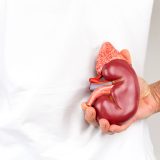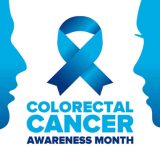

Statistics
One in eight, or about 12%, of women in the United States will experience breast cancer in their lifetime. This disease does not only affect women, as men get breast cancer at a rate of about 1 in 1,000. While 85% of new breast cancers occur in women with no family history, about 5-10% can be linked to gene mutations, most commonly in the BRCA1 and BRCA2 genes. Often a lump or tumor is too small to detect without a mammogram, which is basically an X-ray of the breast tissue.
Symptoms
Other symptoms of breast cancer can include swelling in the breast, skin irritation or dimpling of the breast or nipple, pain in the breast or nipple, lumps under the arm and any discharge other than breast milk. If any of these symptoms are present, consult a physician immediately.
A New Approach To Early Detection?
One fascinating approach to early detection is the use of dogs to sniff out breast cancer! Dogs have a very powerful sense of smell, with 300 million receptors, in comparison with our 5 million scent sensors. Dogs also have the Jacobson’s organ, a second smelling organ in the back of their nose which we do not have. They are able to smell many compounds that we do not even detect. Dogs have now been trained to sniff the breath and urine of patients to determine if cancer is present.
Study
A 2006 study demonstrated that a group of dogs with only basic behavioral training were able to be further trained to accurately distinguish breath samples of lung and breast cancer patients from the control groups. One dog, Lucy, has a 95% success rate at sniffing out prostate cancer. Daisy, another cancer detection dog, sniffed out a tumor deep in the breast of her handler as well as in several patients.
There is some concern over the dogs’ accuracy in sniffing out cancers, as training and abilities vary. To that end, more accurate scent detection tools are being developed, which can identify the same compounds that dogs sense. In the meantime, while some dogs have demonstrated significant abilities in sniffing out cancers, there is not yet enough evidence to support the mainstream use of dogs for early cancer detection.




